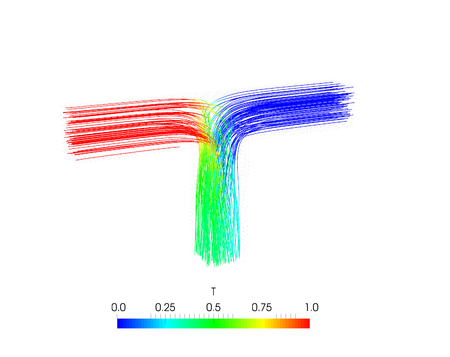Difference between revisions of "T-junction by Bahram Haddadi and colleagues"
Jump to navigation
Jump to search
Jozsef Nagy (talk | contribs) |
Jozsef Nagy (talk | contribs) |
||
| Line 10: | Line 10: | ||
=[http://cfd.at/downloads/FoamTutV4_10-ExampleTen.pdf Residence time distribution]= | =[http://cfd.at/downloads/FoamTutV4_10-ExampleTen.pdf Residence time distribution]= | ||
| − | '''Explanation''': Use | + | '''Explanation''': Use simpleFoam and scalarTransportFoam to simulate the flow through a square cross section T pipe and calculate RTD (Residence Time Distribution) for both inlets using a step function injection. |
[[File:tuvienna10.png|450px|right|]] | [[File:tuvienna10.png|450px|right|]] | ||
Revision as of 08:12, 30 March 2018
- contributor: Bahram Haddadi, Clemens Gößnitzer, Sylvia Zibuschka, Yitong Chen
- affiliation: Institute of Chemical, Environmental and Bioscience Engineering, TU Wien, Austira
- contact: click here for email address
- OpenFOAM version: OpenFOAM 5.0 and v1712
- Published under: CC BY-NC-SA license (creative commons licenses)
- Editorial board: Bahram Haddadi, Christian Jordan, Michael Harasek
Residence time distribution
Explanation: Use simpleFoam and scalarTransportFoam to simulate the flow through a square cross section T pipe and calculate RTD (Residence Time Distribution) for both inlets using a step function injection.
Objectives:
- Understanding RTD calculation using OpenFOAM
- Using multiple solver for a simulation
Download pdf here.
Picture: Bahram Haddadi, TU Wien
